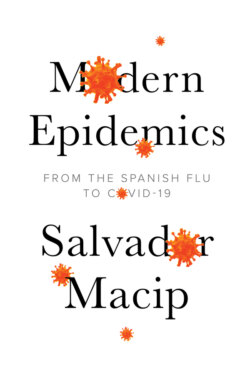Читать книгу Modern Epidemics - Salvador Macip - Страница 20
Which disease spreads fastest?
ОглавлениеIt has been estimated that the 1918 flu pandemic had an R0 of around 4 (meaning that each affected person infected four more). Seasonal flu (the annual one) normally has an R0 of between 1.3 and 3. The A(H1N1) flu pandemic of spring 2009 had an R0 of only 1.4, while that for measles is 15, which means that it’s a much more contagious disease than the others. The R0 for smallpox was between 5 and 10, and for AIDS it’s between 10 and 12. That for COVID-19 is still being calculated, but it could be close to 2 at the very most.
An infection’s ability to spread is defined by a variable called R0, which is to say the number of new infections that, on average, each person with the disease can cause or, in other words, how many more people can catch the disease from each already infected person (see box). It’s also important to know the amount of time over which a person can infect others. With most infectious diseases there’s a period of incubation when, although the symptoms haven’t yet appeared, the microbe can often be transmitted. The longer the period, the greater the risk of the outbreak spreading because the infected person normally doesn’t know and appropriate measures to avoid contagion aren’t taken. One known example of this is COVID-19, which, going unnoticed in the early (between ten and fifteen) days, can be contagious. The extreme case is AIDS, which may not show any signs for years. In some cases, infected people will never develop the disease but can, nevertheless, pass it on to others. They’re called carriers.
